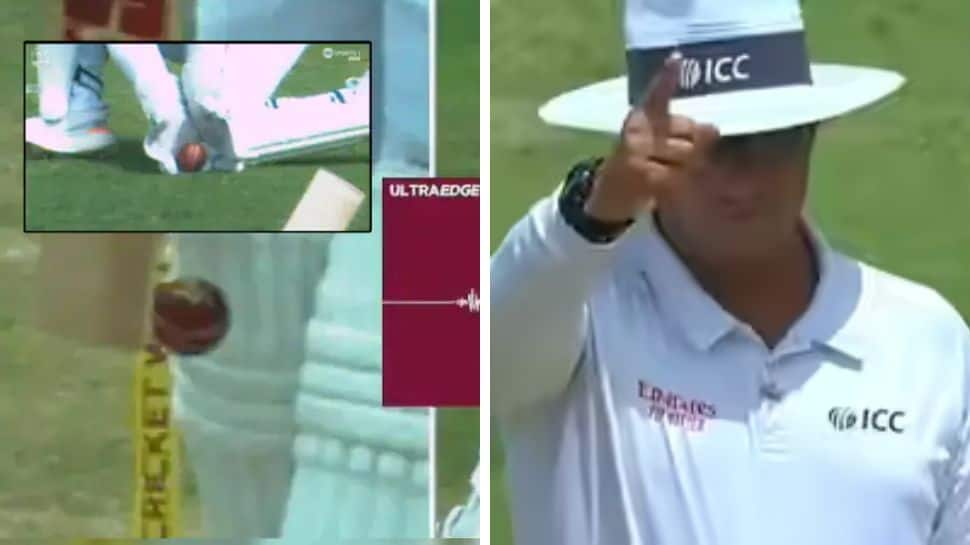The opening Test between West Indies and Australia at Kensington Oval has turned into a battleground not just between bat and ball, but between players and perplexing officiating. Day 2 saw a cascade of controversial decisions from third umpire Adrian Holdstock, igniting outrage among fans, experts, and players alike — with some calling it a new low for umpiring in the DRS era.
Adrian holdstock probably the worst umpire of this generation… Roston Chase was given out despite a clear deviation. What a shame! @ICC please take some action about this. #WIvsAUS pic.twitter.com/5ORQlWe7WO
— Not Roudra (@Roy755384) June 26, 2025
DRS Blunders Spark Firestorm
While the match remains evenly poised — Australia at 92/4 in their second innings, leading by 82 — the real narrative has been dominated by umpiring blunders that could well swing the series.
The first major flashpoint came when West Indies captain Roston Chase, batting on a composed 44, was given out LBW to Pat Cummins. Chase reviewed immediately. UltraEdge showed what many interpreted as a clear spike before the ball hit the pads, suggesting bat contact. However, Holdstock ignored the spike, upholding the on-field decision. The cricketing world erupted.
Veteran commentator and former West Indies pacer Ian Bishop didn’t mince words on air:
“I disagree with the decision. I thought he hit that. Chase is in total bewilderment. In my view, that clearly should not have been out.”
Fans flooded social media platforms, branding Holdstock as the “worst umpire of this generation.” The phrase trended worldwide as anger over the technology’s misuse grew louder.
Shai Hope’s Dismissal Adds Fuel to the Fire
Just overs later, the controversy doubled. Shai Hope, a pillar in the West Indies batting lineup, was on 48 when he edged behind to Alex Carey. While initially appearing a sharp take, slow-motion replays strongly suggested the ball touched the turf as Carey completed the catch.
Yet again, Holdstock adjudged it a clean catch. Hope, visibly disappointed, walked back, and another potentially match-defining moment tilted away from the hosts.
Social media lit up:
“Absolutely horrendous umpiring… Not a clean catch, full stop,” one user posted.
“West Indies, walk off the field. This is a disgrace,” said another, voicing what many fans were beginning to think.
Flashback to Day 1: Travis Head Escape Raises Eyebrows
The seeds of controversy were sown as early as Day 1, when Travis Head survived a close call off Shamar Joseph. Replays seemed to show a clean edge carried to the wicketkeeper, but Holdstock ruled there was insufficient evidence to overturn the not-out decision. Head now finds himself in the middle once again, alongside Beau Webster, trying to rebuild Australia’s innings.
Umpiring Under the Microscope: ICC Must Act
The consistency and integrity of the Decision Review System have once again been thrust into the spotlight. These are not mere judgment errors; they’re pivotal moments influencing the course of the game and potentially the series. For a side like West Indies, rebuilding its red-ball identity, such calls can be crushing.
Experts and former players have called on the International Cricket Council (ICC) to take a hard look at the use — and abuse — of technology. When the tools at hand are misread or mishandled, the game’s spirit suffers. Fans deserve better. Teams deserve fairness. The sport deserves clarity.

